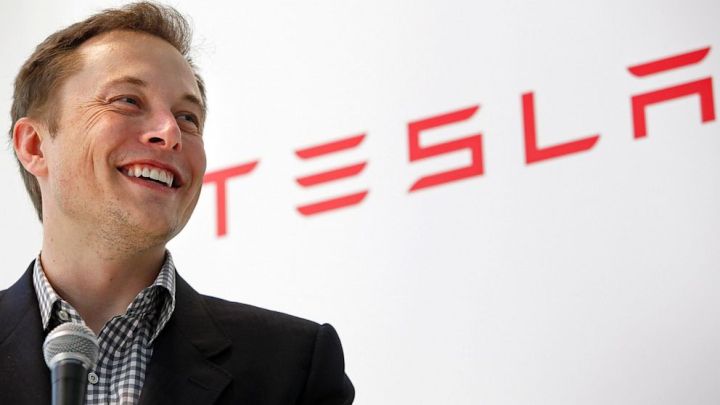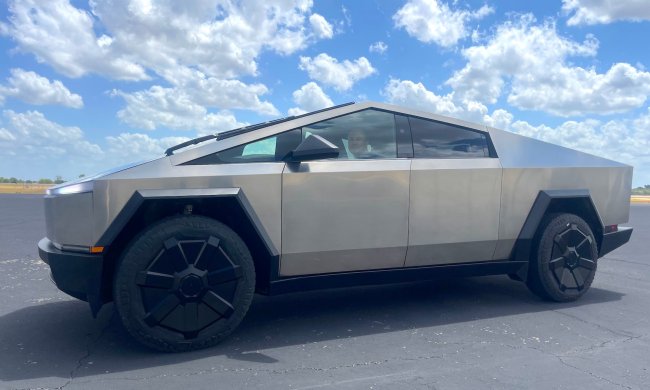
The master plan
Musk started by saying that when the Tesla master plan was first published in 2006, it had already been in his mind for more than a decade. The plan from the start was to produce low-volume, high-priced electric cars to fund the production of many more vehicles and models in the future. He said that the original team, many of whom still work for the company, really cared about doing the right things. Even though they made mistakes that in some cases turned out to be foolish or stupid, they always had the right motivation. “We say things we believe even if what we believe may be delusional.”
Early inspirations and risky business
The team’s first inspiration for an electric car was the AC Propulsion T-Zero, which cost $300K to $400K to produce, and was never intended for sale. It originally had lead acid batteries, air-cooling, and no roof or doors, but it could go from zero to 60 in 4 seconds and had a range of 250 miles on a charge. Tesla wanted to take advantage of people on the ground at the time rather than start totally from scratch, and AC Propulsion had a fun, fast vehicle.
We say things we believe even if what we believe may be delusional.”
“It is super obvious from physics that electric cars are the way to go,” Musk said. He predicted that in the not-too-distant future, gas engines will be what steam engines are today.
Musk recounted that when they started Tesla, it was very risky and untrendy to talk about electric cars. “Starting a car company was stupid and starting an electric car company stupidity squared,” he said.
Because Musk believes that you don’t ask people to invest their money unless you invest your own, 98 percent of the money in the first series A funding was what he made from selling PayPal. Musk thought Tesla had maybe a 10 percent chance of success. At the time, the big car companies were abandoning electric cars and GM was crushing all the EV1s. Even the first employees thought the odds were against them, but they believed in technology and thought Tesla was a way to create something good.
More Tesla: MIT wants to pay Tesla owners $1,000 to watch them drive
Musk: “Only two car companies in American history have not gone bankrupt: Ford and Tesla.”
False premises
Musk said the company was based on two false premises. The team thought they could use the technology from the T-Zero. They also thought they could slightly modify a Lotus Elise, and it would work. From safety and legal standards, neither were true. In they end, only 6-7 percent of the parts in their first model were from other cars, and it would have been much cheaper to build from scratch.

Musk said a major lesson from their earliest years was, even if you start with false premises, what works is recognizing and correcting. Acknowledge and recognize mistakes and adapt quickly. “When you have a company full of passionate people who are mission-driven, what you think you can do isn’t the same as what you can actually accomplish.”
The first Tesla prototype Roadster 01 was shown in 2006. Musk and Straubel both said it’s easy to design a sports car that looks good, but much harder to design a good-looking sedan. With the first launch, they had 100 customers when they thought they might get 10. They had to pump ice water behind curtains to keep the batteries cool on the demo models and yet they still had total strangers buy the car — Musk expected only family and maybe a few friends would buy it. They saw this launch as the beginning of the revenge of the electric car.
More Model S: A Tesla Model S crashed, and the driver is blaming Autopilot
Described by Musk as “doom on a stick,” Tesla had to replace the drive units for every Model 01 built. That was when Musk and Tesla realized they had to rethink their role. They had to invent new ways to manufacture the things they designed. Building the machine that builds the machine is now an integral company theme.
Daimler steps in
In 2009, Tesla made a one-off electric Smart Car for Daimler in a hail-Mary effort to keep the company going. It resulted in Daimler investing $50 million. Without that investment, Musk said, Tesla would have gone under. Every roadster Telsa made up to the second half of 2009 lost money. In those intermediate years, it survived thanks to its powertrain business. The Daimler relationship continues; Tesla builds the powertrain for the Mercedes-Benz electric B-class models.
DOE loan
The U.S. Department of Energy loan program, which was signed during the Bush administration but executed while Obama was the President, came to Tesla as the company was coming out of financial danger. Tesla received a relatively modest amount from the program compared to Ford and Nissan. Tesla paid back the loan in 2013 plus interest and pre-payment penalties.
IPO and the Model S
At the Tesla IPO in 2010, Tesla inspired both love and hate. Musk said that shortly after the IPO, Tesla was the most shorted stock on the market. That same year, Tesla started a relationship with Toyota. Tesla bought the Fremont factory from Toyota and makes the drivetrain for the electric Rav4. Toyota invested $50 million at the Tesla IPO.
This year Tesla, will build about 100,000 cars between the Model S and the Model X.
The Model S beta in 2011 had a great reception and for the first time, the manufacturer was able to send software to a car. Model S deliveries started in 2012, along with the the Tesla Supercharger network for high-speed charging. The high-speed charging port is built into all Tesla vehicles because it answers the question, “Can I drive my car long distance?” Musk said it’s a basic question about freedom.
Getting up to production capacity
This year Tesla, will build about 100,000 cars between the Model S and the Model X. As it ramps up to build 500,000 cars in 2018, building their own batteries will be key. In 2018, Tesla will require more lithium-ion battery power than is currently produced annually in the whole world. When speaking of Tesla’s energy products, Musk said the rate of growth will be several times the growth rate for cars.
Hubris and the Model X
As he has stated before, Musk said that the 2015 Model X delivery was an act of hubris. Tesla put way too much new tech in a single model. It would have been smarter to spread the technology advances over two or three versions rather than just one. Speaking specifically about the Model X doors, Musk said it’s been tough to refine and get the software and the sensors to work well. He said the doors are now almost useful, and that at this point it’s a software problem with one update coming soon and another in a month or so. At that point, Musk claimed, the Model X will have fully functioning doors.
The Model 3
The Model 3 launch presentation was the first time Tesla rehearsed for more than one day. The Model 3 is the car it always wanted to build. Model S and Model X sales enabled the Model 3, while the S and X will always be technology leaders. First technology products are expensive, so new technology will debut the more expensive cars. In one of the few specific future statements of the meeting, Musk said that free Supercharger use will not be bundled in the Model 3 price, as it is with the S and X.
Musk said Tesla prices are not changed by consumer incentives. Tesla’s markup is always 20 to 25 percent of the cost of production.
He reiterated the theme that the true difficulty is building the machine that builds the machine. Seeing the factory itself as a product, Tesla will be better prepared for future production. Musk said that if there is potential for production improvement by changing cars, that factor is 10 times greater when you improve the factory that makes the car.
Musk’s best line
During the Q&A at the end of the annual meeting, a woman asked, “What is your strategy for personal mental clarity and long-term mental health?”
Musk’s answer: “I am not engaging in a set of actions likely to maximize my lifespan.”



